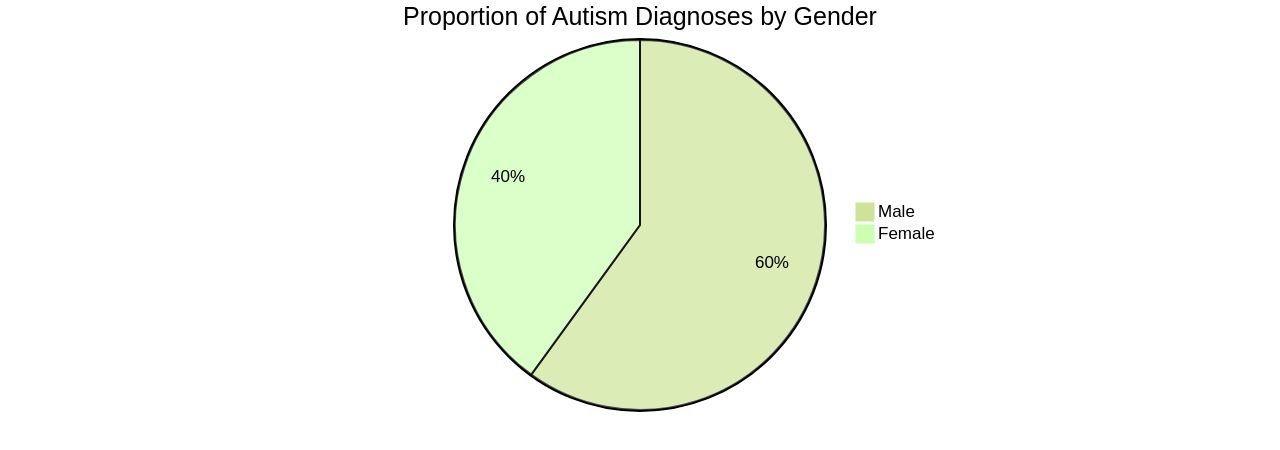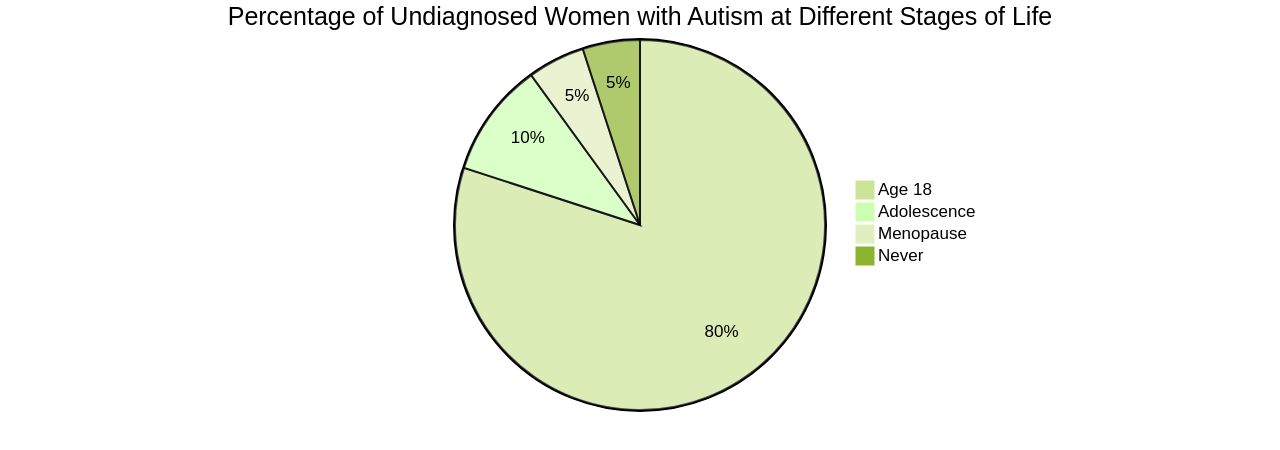Introduction
Autism is a condition that affects approximately 1% of the population, yet there is a significant gender bias in its diagnosis and understanding. The longstanding bias towards males in autism studies has resulted in skewed diagnostic tools, leaving many women and girls undiagnosed or misdiagnosed.
This gender disparity calls for a significant shift in our approach to autism, starting with better education for clinicians. This article explores the challenges faced by autistic women, the impact of late diagnosis, and the importance of recognizing autism in women to ensure they receive the support they need to thrive.
The Autism Gender Bias
The longstanding bias towards males in autism studies has resulted in skewed diagnostic tools, leaving many women and girls undiagnosed or misdiagnosed. This is reflected in the National Disability Insurance Scheme (NDIS), where 70% of the 35% autistic participants are male.
This gender disparity calls for a significant shift in our approach to autism, starting with better education for clinicians. Professor Robyn Young, a leading researcher in the field, emphasizes the need to make clinicians more aware of how autism presents in women.
This involves looking beyond common disorders like anxiety and eating disorders and considering the possibility of autism. A groundbreaking Australian study involving nearly 800 children found that current diagnostic tools are ill-equipped to detect autism in females.
The study highlights that autistic girls and women often mask their traits, resulting in delayed or missed diagnoses, which subsequently deprive them of necessary supports. This is further complicated by societal stereotypes of autism, which may cause women with good social scripts and eye contact to go unnoticed.
This gender bias has severe implications. For instance, Heather Cox, diagnosed at 38, expresses frustration over the years she spent without support, developing unhealthy coping mechanisms. A late diagnosis can lead to a higher need for support due to the long years of managing without it. Moreover, research shows that women with autism are 13 times more likely to die by suicide compared to those without autism, underscoring the urgency for targeted support and interventions. Ultimately, addressing this gender bias in autism is not just about revising diagnostic tools, but also about changing how we think about autism. Recognizing autism in women is a critical step towards building empathy and fostering a more inclusive society.

Challenges in Diagnosis
Autism in women often remains undiagnosed due to a diagnostic system that is largely based on male presentations. This leads to a delay in the provision of much-needed support and services.
A recent study from Flinders University revealed that diagnostic tools are not well-suited for identifying autism in females, as they often mask their traits, leading to late or even missed diagnoses. This is mirrored in the National Disability Insurance Scheme (NDIS), where only 30% of autistic participants are female.
Moreover, the age of diagnosis is consistently higher for females, with a late diagnosis, especially prevalent among those with a co-occurring intellectual disability. This discrepancy calls for a reevaluation of the diagnostic process.
The impact of a late diagnosis on women is profound. It replaces confusion and self-doubt with clarity and self-understanding, shedding light on their unique neurodivergent way of being.
However, the delay also poses significant risks. Research has found that women with autism are over 13 times more likely to die by suicide, underlining the urgent need for targeted support and interventions. In conclusion, it is essential to revamp the diagnostic process to ensure early detection and intervention. This requires not only updating diagnostic tools but also educating clinicians about the unique presentation of autism in women. This shift in perspective is crucial to ensure that women with autism receive the support they need to thrive.

Masking and Camouflaging
Autism, a condition marked by social communication differences and repetitive behaviors, affects around 1% of the population. Notably, the male to female ratio in autism diagnoses is 3:1, indicating that females are often underdiagnosed.
Moreover, research has found that females tend to receive their autism diagnosis later than males, even when the initial concerns are noted at similar ages. This delay in diagnosis can lead to a lifetime of social confusion, mental health conditions, and a lingering sensation of not fitting in.
In an attempt to fit in, many women with autism engage in 'masking,' a process of consciously or unconsciously hiding their autistic traits and imitating neurotypical behavior. This continuous effort to adapt to a neurotypical world can result in significant mental and emotional stress.
A study involving 787 autistic adults found a strong correlation between masking and heightened levels of anxiety and depression. The more an individual engaged in masking, the greater the emotional regulation difficulty and perceived stress they experienced, leading to increased symptoms of depression and anxiety.
This effect is more pronounced in females. Undiagnosed autistic individuals, particularly women, often grapple with a sense of not belonging and struggle to do things that others find easy. In the absence of a clear explanation, they may perceive themselves as fundamentally different or flawed. However, a late diagnosis can bring about a liberating shift in perspective, replacing confusion and self-doubt with clarity and self-understanding. This newfound narrative helps them understand their unique social interactions, need for solitude, and sensory experiences, affirming their value as neurodiverse individuals.

Social and Emotional Challenges
Autism's impact on women is a topic that's gaining more attention as we discover the complexities of its manifestations. Autism in women often leads to unique emotional and social challenges, which can significantly impact their ability to form and maintain relationships.
They may also grapple with understanding and expressing their emotions, leading to feelings of frustration and isolation. Studies indicate that autism in women manifests in a wider range of communication and interaction differences, showing more diverse and subtle characteristics.
This is often overlooked due to the limited examples provided by diagnostic criteria. As a result, many women with autism remain undiagnosed until adulthood, leading to poorer mental health compared to men with autism.
According to a recent study, 80% of women with autism remain undiagnosed at 18, with diagnosis often coming at a crisis point. This highlights the issue of autism in women and the delay in diagnosis for many. The late recognition of autism in women can result in difficulties during adolescence, menopause, or may not happen at all.
This is a cause for concern, as autistic women are 13 times more likely to die by suicide compared to those without autism. On the other hand, being diagnosed with autism in women later in life can also be a liberating experience, replacing confusion and self-doubt with clarity and self-understanding. It illuminates why social interactions can be draining, why solitude is a necessity, and why sensory experiences can be overwhelming. Clinicians urgently need more education to recognize how autism presents in women, ensuring that they receive the necessary support early on in relation to autism in women. Autistic women need targeted support and interventions, as understanding their neurodivergent way of being can make a significant difference in their lives.

Conclusion
In conclusion, the gender bias in autism studies has left many women and girls undiagnosed or misdiagnosed. This calls for a significant shift in our approach to autism, starting with better education for clinicians. Recognizing autism in women is crucial to ensure they receive the support they need.
Challenges in diagnosing autism in women include current tools ill-equipped to detect autism in females and the masking of traits, leading to delayed or missed diagnoses. Late diagnosis can have severe implications, including a higher need for support and increased suicide risk. Masking and camouflaging are common strategies used by women with autism to fit into a neurotypical world but can result in significant mental and emotional stress.
Understanding the impact of masking is important for providing appropriate support. Autistic women face unique social and emotional challenges that can affect their relationships and mental health. Late diagnosis is prevalent, leading to poorer mental health outcomes compared to their male counterparts.
Receiving an autism diagnosis later in life can be both challenging and liberating, bringing clarity and self-understanding. It helps individuals navigate their unique social interactions, sensory experiences, and need for solitude. To address these issues, there is an urgent need for greater education for clinicians to recognize how autism presents in women.
By understanding the neurodivergent way of being, targeted support can make a significant difference. In conclusion, overcoming the gender bias in autism research and diagnosis is essential. By recognizing and supporting autistic women early on, we can foster a more inclusive society that values and empowers all individuals on the spectrum.




